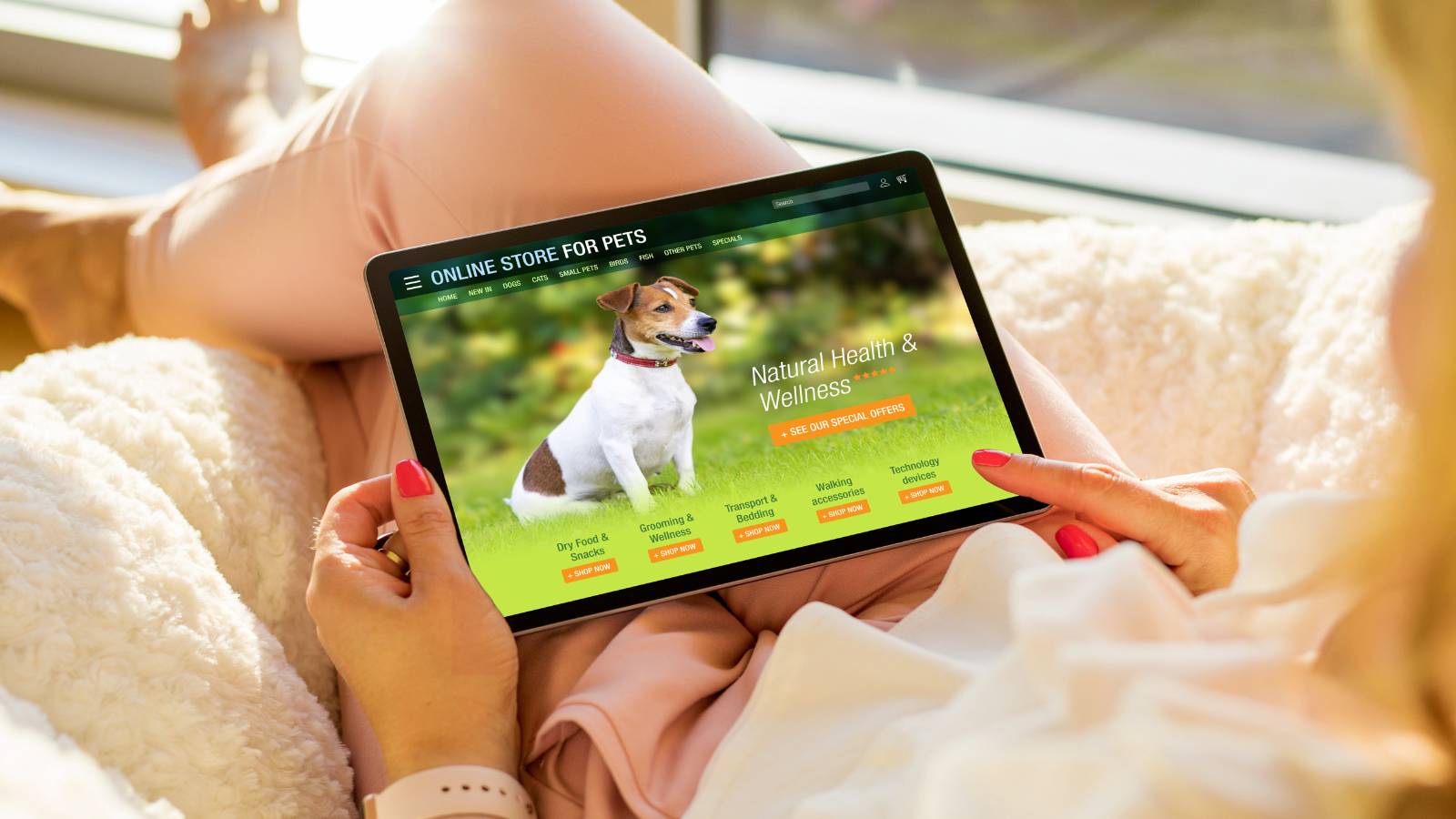What is a Replenish Email?
A replenish email, also known as a re-order email, is an email that reminds customers to return to your store to re-purchase items they have previously purchased. It can also contain an upsell call to action (CTA) that suggests new, related items to try.
Replenish email benefits include:
- They are ideal for products designed to be re-ordered on a regular basis. These include consumables like food, treats, supplements, shampoos, medications, and sometimes toys.
- They incorporate seasonal discounts like holiday offers, Mother's Day and Father's Day gift suggestions, and reminders for special occasions like birthdays.
- They build trust and rapport with your customer who appreciates the reminder before they run out of the products they use regularly.
- They offer merchants the opportunity to personally connect with customers who already purchase from your store.
- Re-engaging with a repeat customer is much less expensive than acquiring new customers. A solid replenish email system can free up your advertising dollars to acquire new customers.
In a Google search you can find plenty of replenish email blogs and visual email examples as well as instructions for how to analyze customer data with Excel, create look-alike audiences, customer segments, and workflow automations to optimize email cadence for delivery.
Several software tools say they do this work for you, yet they are expensive, complicated to set up and use, and still require a dedicated person to segment audiences and create, monitor & adjust automation flow diagrams.
This article is not about the old-fashioned way of doing replenish emails. Here we discuss the new landscape of re-engaging with customers, making it easier, more effective, and less expensive.

First-Party Data Fuels Potent Replenish Emails
The next generation of replenish emails automatically optimize and individualize email content, offers, product selection, and delivery cadence for each and every customer.
With the sunsetting of third-party data collection due to increased global privacy regulations, the collection of first-party data has become critical. Doing it correctly is a foundational piece for replenish email setup and execution.
Major e-commerce platforms like Shopify and Woo Commerce already collect specific pieces of personally identifiable information (PII) from customers when they visit or purchase from your store. However, true first party information that feeds next generation replenish emails must go one step further. This next level of information is collected and stored in the Shopify app that you use to extend Shopify's functionality.
For example, pet stores that use the PetPro AI app collect information about a customer's pet via the pet profile entry form. That data is then stored in an encrypted database. This first party information appears alongside Shopify's customer information in the store environment and is available to both the customer and the merchant. Merchants can now see their customers' pet information in the customer screens and use it to hyper-personalize their interactions with customers. It also adds individuality to the customized replenish emails that get sent to customers.
Trust is a key factor in customers sharing information with a merchant because, according to Google, 80% of consumers are concerned about the state of online privacy. The key is to be transparent about how you handle and store information customers share with you. Let them know what you will do with their information, and, more importantly, what you WON'T do with their information. Give customers the ability to change their mind about sharing information with you and easily delete it.

One tremendous benefit of next generation replenish emails is that the process of setting up customized outreach to customers is vastly simplified. You no longer need to calculate customer purchase frequency in Excel. You can stop creating customer segments that guess the preferences for your various customers. And workflow diagrams with "if/then" arguments for customer actions become obsolete.
A next generation replenish email system will automatically generate and send replenish emails to your customers, enabling you to focus on one of your most important tasks - attracting new customers to your store.
Replenish email software should:
- Know the most optimal delivery timing and frequency for individual customer email delivery.
- Customize subject lines and email body content with relevant customer information.
- Enable you to easily create discounts & incentives for products customers buy regularly.
- Offer upsells based on customers with the same purchase history & first party information.
BCG reports that "data driven marketing can double revenue and increase cost savings by 1.6 times".
5 Important Email Stats to Know
- Replenish emails have a 53.6% open rate, the highest of any type of email, according to Listrak. The nudge to re-order something a customer uses regularly is appreciated and rewarded with conversion.
- Mobile phones have become the de facto standard for customer communications and transactions. resulting in 81% of emails being opened and read on mobile devices.
- 69% of email recipients will report spam based on a bad subject line. A customized replenish email system will automatically optimize and personalize the subject line, dramatically decreasing spam reporting.
- Personalized email subject lines increase email open rates by at least 50%.
- 90% of consumers are willing to share personal data with a merchant when offered the right value exchange. The highest value drivers include discounts and free samples for products they want. See chart below from BCG outlining the top reasons people share information with merchants.

3 Ways Replenish Emails Deliver Results
Replenish emails should be sent to customers to coincide with the timing of their last purchase. The theory is that they are running low and will need to repurchase, so nudge them in that direction.
1) Optimizes Delivery Timing Automatically
When should you send replenish emails to your customers? Too often or at the wrong interval can result in a high level of attrition through unsubscribes. Too little can result in customers forgetting to buy at regular intervals that keep their cabinets stocked. How can you tell the right timing to send replenish emails?
There are three ways to determine the proper cadence: analyze buying patterns with Excel, segment customers, or automate using artificial intelligence. We examine all three below.
a) Old Way: Analyze Customer Buying Patterns with Excel
The old way of figuring out when to send replenish emails is tedious and time consuming and requires that you analyze average customer purchase frequencies by adding up total purchases made over a set period of time and dividing that by the number of distinct customers buying during that period of time. This requires an intermediate level of Excel knowledge and regular spreadsheet maintenance to calculate the average purchase frequency. Then you have to keep the spreadsheet current, repeating the calculation process regularly. If you have a varied catalog, you will be doing this for each customer and each category of product you carry.
b) Old Way: Segment Customers into look-alike audiences
A newer way of configuring replenish email timing is to let the software assist in the process. These software programs schedule the replenish email a few days in advance of the actual date of last purchase or the normal cadence of purchase. Most of these software tools require you to separate customers into segments that you create based on things like behavior, purchase history, geography, demographics, etc. These software solutions improve the cadence of replenish emails, but they still require the merchant to create customer segments and rely on bulk customer information instead of individualized customer activity.
c) New Way: Automatically Generate Customized Emails
The most efficient way to schedule replenish email is to let the software do it for you. The newest software solutions already know your customers' information, shopping history and buying patterns, down to the minute. They also know first party information about your customers that you have asked them to share with your store. These next generation replenish email systems can be highly individualized for each and every customer and automatically send emails at just the right moment.
This landscape is so new that very few email providers offer customized, automatically generated replenish emails that are enhanced by first party information. Those that do utilize advanced tools within the software to handle all of the details automatically.
2) Customizes Customer Outreach Content
What are the components of a customized replenish email? In the current state of digital marketing, this is still a wild west frontier with so many untapped possibilities for customizing contact with customers.
New software tools that create replenish emails can customize outreach in several key ways:
- Include a customer's name in the subject line or body of an email.
- Include information about customers' routines, habits, sizes and preferences enabling you to build a connection with the customer.
- Quickly present a variety of styles of subject lines and content options that better match your store's voice or tone.
- Create a highly relevant message for a specific CTA , like an abandoned cart or "sale ending soon" nudge.
- Send a customized email in advance of a customer's or family member's birthday with a discount coupon, demonstrating that you know and care about them.
- Create location and time specific offers like a "Midwest Stock-Up Sale" or "Beat the Holiday Rush" event. These can be individualized to speak directly to customers and offer specific products for their families.

3) Creates Helpful and Meaningful Customer Exchange
Replenish emails, by their very nature, are designed to put the same previously purchased product back in front of your customer. The key to making the replenish email helpful and meaningful is to show the customer that you "see" them and cultivate a trusting relationship with them.
When you have first party information about a customer and the products they have purchased before, you have the building blocks to make relevant suggestions for other products they could find useful.
Laser focus your targeting on nudging customers to re-purchase the same product. Encourage them to try a truly relevant new product. Then sweeten the deal with a promotional discount. Simplify the CTA and make the reward potent. This "relationship building" with customers builds trust and loyalty and protects the customer's valuable time.
Recommended Reading
Subject Line Examples We Love by Drip.com
15+ Email Subject Line Statistics 2023 by Zippia
Consumers Want Privacy: Marketers can Deliver by BCG
Driving Growth in a Changing Privacy Environment by Think with Google

